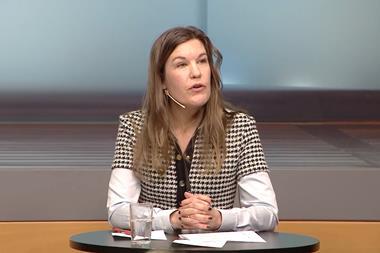The Pensions Regulator (TPR) this week published guidance for pension scheme governing bodies and employers on equality, diversity and inclusion (EDI) with a view to imrpoving the EDI of UK pension schemes’ boards.
Louise Davey, TPR’s director of regulatory policy, analysis and advice, said: “All savers deserve to be in a well-run pension scheme that makes decisions in their best interests.”
She added: “Harnessing diverse views can help pension scheme governing bodies weigh issues in more detail and openly consider aspects important to those impacted by their decisions.”
Davey noted that this would enable all those involved to “better understand and mitigate scheme risks, avoid unintended consequences, and learn from what is working and what is not”.
“Employers also have an important role in ensuring EDI is considered by their scheme. And they have a duty to support employees who are nominated to their scheme’s governing body. That’s why we’ve provided specific guidance for scheme employers,” she said.
“While we recognise different scheme types, sizes and sectors may face different challenges, we believe there are some quick and easy steps that can and should be taken to improve schemes’ EDI now,” Davey said.
The guidance provides pointers for chairs – explaining that the chair should play a key role in making boards more diverse and inclusive. It also includes advice on some of the EDI-related considerations an employer will wish to consider when appointing a chair.
TPR’s guidance also suggests pension schemes have an EDI policy which covered an agreed definition of EDI, the EDI aims of the governing body and an EDI training plan.
Assessments of the governing body’s performance should include how well EDI has been, and continues to be, embedded into processes, according to scheme objectives.
The guidance also suggests that EDI goals and objectives, including ways to achieve a diverse and inclusive governing body, should be agreed at the start of the scheme year.
Governing bodies should also regularly review and assess their body’s diversity of life experiences, expertise and skills, TPR said. The guidance also encourages sponsoring employers to consider widening the pool of candidates for governing bodies beyond senior management positions.
It also highlights the value that being a trustee can have on an employee’s personal and career development.

Darren Redmayne, chief execuive officer of Cardano Advisory, said: “The pensions industry has some way to go and we should take learnings from the great strides that initiatives such as the 30% Club and the FTSE Women Leaders Review have had over the last few years. It is crucial that firms and schemes continue to attract diverse talent to develop best practice DEI [diversity, equality and inclusion] policies from the ground up, to prevent lack of representation from being a barrier to change, and encourage an inclusive culture.”
Cardano recently commissioned research that showed there is industry consensus that improving diversity, equality and inclusion is a useful way to broaden a team’s skill sets as well as improve governance and decision-making for better member outcomes.
According to James Smith, consultant at Hymans Robertson, high-quality schemes are already taking action in this area, integrating EDI into annual effectiveness reviews and constructing plans to widen board diversity and inclusion and to factor member EDI into decision-making.
“We are particularly pleased to see that TPR has included guidance for employers in addition to trustees and especially a sample job advert for a trustee,” Smith said. “This will provide a framework for all stakeholders in this area and help to make the moves that are needed to ensure that boards are fully meeting the requirements, and embracing, equality, diversity and inclusion.”
Susan Hoare, partner at Aon, said: “These new EDI publications from TPR are an important step in the right direction. My experience is that many boards are keen to embrace EDI but don’t quite know where to start in a pensions environment. This guidance provides clarity and key areas of focus such as creating inclusive boards, inclusive communications with members, understanding the board’s diversity characteristics and skills, and recruiting diverse member-nominated candidates.”
She added that the tone on inclusion is set by the chair: “If the chair doesn’t create the right atmosphere in the room – in the way they introduce topics, encourage others to contribute or make others feel that they can ask a ‘silly’ question – then a scheme won’t get the value of the whole board.”
“Appointing a diverse board and creating an inclusive environment for them to operate within, are two fundamental ways to start to address the potential for unconscious bias in trustee decision-making,” Hoare said.
The latest digital edition of IPE’s magazine is now available






























No comments yet